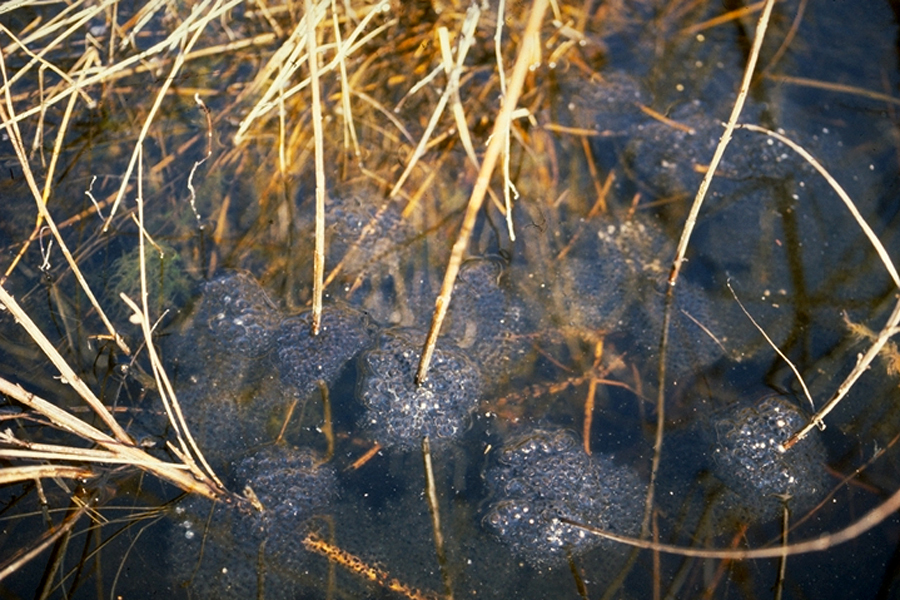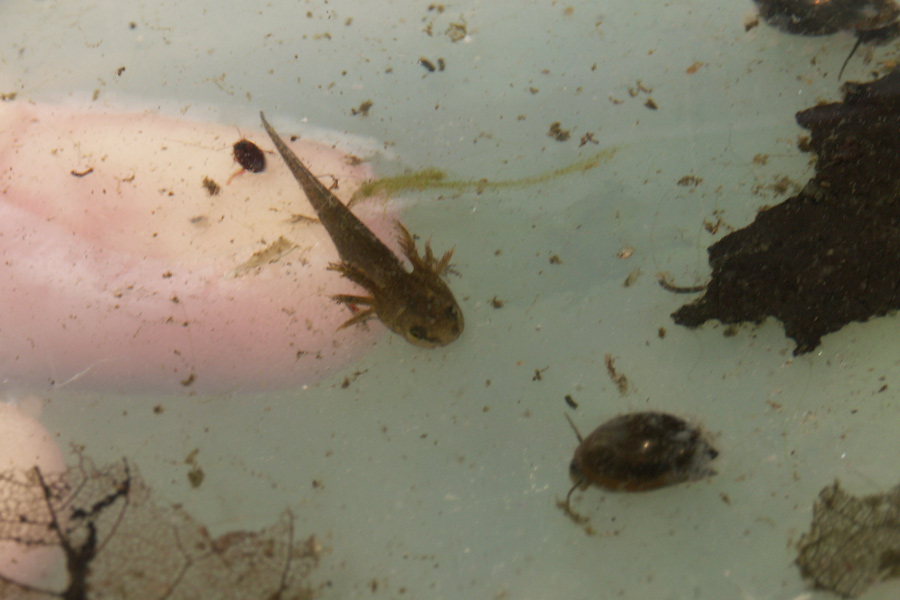Lydia Kifner, MS Student; Department of Civil and Environmental Engineering
When working on water chemistry it is very easy to become absorbed in minute interactions and small-scale consequences, and forget about the larger ecosystems where these reactions take place. By working with an interdisciplinary team I am reminded every day to think about biogeochemistry on a larger scale. However, the research articles I read generally focus on chemical reactions, microscale changes, and microscopic particles. There is often a sentence at the end—almost a disclaimer—stating that the research has implications for fauna, flora, or the environment in general. I often find myself wondering what these implications are; how do these tiny scale studies of vernal pools relate to the larger processes occurring in the pools? It was refreshing to come across Brooks’ paper “Weather-related effects on woodland vernal pool hydrology and hydroperiod” (2004), which models vernal pool hydrology and clearly outlines the research implications for the amphibians that depend on vernal pools.
It is important to be aware of the hydrology of vernal pools because of its impacts on the chemistry and biology of vernal pools. Water inputs from different sources will have different chemistries and therefore have different chemical inputs into the pool. Changing water levels in the pool can cause constituents to become more concentrated or diluted. Hydroperiod of the pool—when the pool dries down—has important implications for both pool chemistry and for pool-breeding amphibians. Brooks (2004) states that the two most important factors on pool hydroperiod are precipitation and evapotranspiration. He studied how precipitation and evapotranspiration (water released into the atmosphere by evaporation from surfaces and transpiration from plants) impacted to water levels of four vernal pools in Massachusetts, and discussed how climate change could impact the hydrology (and thus other facets) of vernal pools in northeastern forests.
The hydroperiod of vernal pools strongly impacts what animals and plants will thrive in the area because amphibian survival and egg development is strongly linked to pool conditions. It is imperative to survival that the hydroperiod of the pool is long enough to allow metamorphosis and emergence for these amphibians; if the pool dries too quickly, the animals will not survive. Pools that have longer hydroperiods have amphibians that metamorphose later, and thus are larger and stronger when they emerge from the pool. A characteristic of vernal pools is that the hydroperiod varies from year to year thus resulting in variation within amphibian productivity from one year to the next (Brooks, 2004).

Photo credit vernalpool.org
The climate in the northeast is projected to become warmer and wetter over the next 100 years. Under these predictions, precipitation would become less than evapotranspiration approximately three weeks earlier than currently, resulting in pools that dry up more quickly. This would result in higher losses of amphibian reproductive efforts. Since hydroperiod of vernal pools is largely determined by climactic conditions, such as evapotranspiration and precipitation, any changes in climate will impact vernal pools and the biota that depend on them. It is likely that climate change will decrease productive reproduction years for amphibians by shortening hydroperiod of vernal pools (Brooks, 2004).
References
Brooks, R. T. Weather-related effects on woodland vernal pool hydrology and hydroperiod. Wetlands 24, 104–114 (2004).

